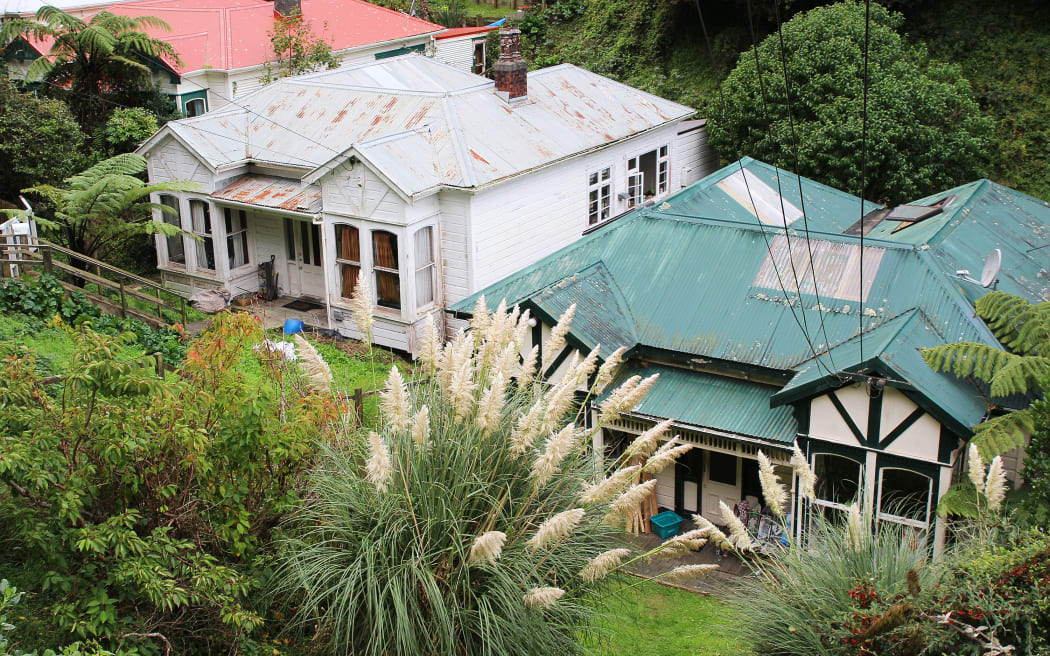We're still hearing stories of cold, damp, mouldy rentals, four years after the introduction of Healthy Homes standards. What exactly are the rules, and why are so many landlords able to duck them?

The Healthy Homes requirements only cover the bare minimum of keeping a house warm and dry, and there are often exemptions available for not meeting the standards. Photo: Newsroom
Cold, damp and mouldy rental properties are common – despite Healthy Homes standards being law for four years.
So, are they actually achieving anything?
The Detail today looks at how a home inspection is carried out, following the experts as they measure for the new standards.
Stuff senior business journalist Miriam Bell tells The Detail there are five standards – heating, insulation, ventilation, moisture ingress and drainage, and draught.
"A landlord has to provide one or more heaters which are fixed and not portable, that can heat the main living area," she says.
Rental properties need ceiling and underfloor insulation up to a certain code, kitchen and bathrooms must have extractor fans or systems, and windows in rooms must be able to open.
They also need efficient drainage for stormwater, service water and groundwater, and can't have unreasonable gaps or holes in walls, ceilings or windows.
"Some of them sound quite obvious and you would think places would have them, but they don't necessarily," Bell says.
How can we tell if homes meet these standards?
Assessors are responsible for looking at the homes to see if they meet the standards. All Clear is one such company.
All Clear's lead assessor Brendan Young and co-director Adam Gordon took The Detail's Tom Kitchin out to a job at a South Auckland property.
There are a whole range of things assessors check to measure compliance – from the obvious spots, through to climbing into the ceiling and crawling under the house – to making complicated heating calculations to see if a wood-burner or heat pump will heat the house well enough.
One of the most intriguing things is a smoke test to see if the kitchen and bathroom extraction fans work properly.
"That's literally just lighting a smoke match and watching the smoke from the outside, to make sure it's coming out the external vent," Young says.
Smoke matches are "literally just a match, that's specially designed not to burn with flame, it just produces a whole lot of smoke. And all we do is we hold it underneath the ventilation system."
Are the standards actually working?
While it's seen as good to have some basic housing standards for renters, the Healthy Homes requirements only cover the bare minimum of keeping a house warm and dry, and there are often exemptions available for not meeting the standards – for example, if the design of a home means insulation would be not reasonably practicable to install, if it is part of a body corporate, or if the landlord plans to demolish the property.
"I guess the problem would be that it was a long process to get what they got through into law, and so they're essentially the bare minimum set of standards in the areas that they cover – they're not perfect in that sense," Bell tells The Detail.
It's also hard to measure compliance. There's no central government database on how many homes comply – private assessment companies are tasked with collecting their own data.
All Clear data shows 69 percent of properties they assess become fully compliant.
That's a vast improvement on compliance levels at their first visit (which is only 21 per cent), but that figure also includes properties that received exemptions from meeting the standards.
It's also difficult for tenants to complain if they have a problem. They can go to the Tenancy Compliance and Investigations Team (TCIT), or the Tenancy Tribunal, but that's not an easy task.
"That's quite a difficult undertaking – and especially if you're not certain of what you're entitled to and how it all works," Bell says.
Bell says only about 18 percent of tenants that have gone to the tribunal with Healthy Homes compliance issues have received some form of remedy.
TCIT tells The Detail out of 941 compliance checks it made in the last financial year, either arising from complaints or proactive work, fewer than half – 421 – led to enforcement against landlords.
How can we improve it?
"I think there probably needs to be a push in New Zealand towards professional property management," Adam Gordon from All Clear says.
"The vast majority of property managers that we work with are very, very good at what they do. They understand the legislation, they understand the process and they are very good at communicating that."
Gordon says less than 40 percent of rental properties are professionally managed in New Zealand, compared to about 70 percent in Australia.
Bell says New Zealand's been building at a high rate in recent years compared to previous decades, despite construction supply delays.
"I guess you'd have to hope that building continues – that momentum towards creating new stock which is more compliant with the way we'd like our homes to be."
Tag along on a Healthy Homes assessment by listening to the full episode.
Check out how to listen to and follow The Detail here.
You can also stay up-to-date by liking us on Facebook or following us on Twitter.

Photo:


